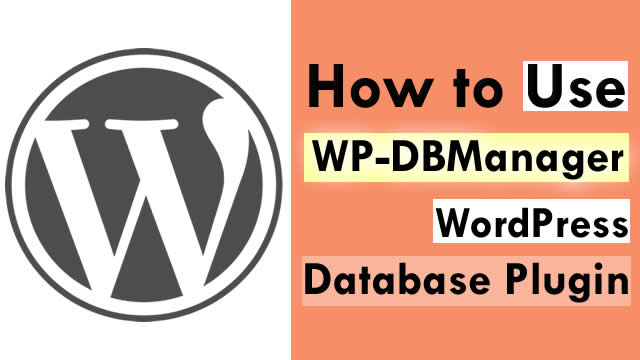Plugins And Tips to Improve The WordPress Admin Area

 Just about everything you do to make your blog better happens through the admin area. You can use the admin area to install custom and premade themes, install plugins, add new web pages, and insert blog content. That is just the beginning. If your website or blog is your ship, the admin area is your brig.
Just about everything you do to make your blog better happens through the admin area. You can use the admin area to install custom and premade themes, install plugins, add new web pages, and insert blog content. That is just the beginning. If your website or blog is your ship, the admin area is your brig.
It stands to reason that anything you can do to make your WP dashboard work better is a good thing. The tips and plugins below will help you get the most out of your WordPress experience. This includes making the process of managing your blog easier and ensuring that your information is protected.
Use a Verification Code to Prevent Unauthorized Access
It turns out that password protection is a relatively weak way to control access. Unfortunately, if you stick with WordPress’ standard login protocol, that is the only thing to protect your WordPress blog and any of the contents within it.
Fortunately, there is a WP plug that has been created to add an additional factor of authentication. The plugin allows you to add a verification code. Then, the access is blocked for anyone trying to get to the dashboard without using that code.
Streamline Your Dashboard By Obscuring Some Items
There is a great plugin for simplifying the admin area and making it less intimidating. It is called the Adminimize plugin. It allows you to hide some of the options available. Of course, when you want an obscured option back, you just have to reactivate it by using the plugin. This is also a great product if you give access to multiple users or invite guest bloggers to post on your site. You can customize what each person sees and what they can access.
Strengthen Your Database With WP-DBManager Plugin

If you have been experienced slow performance and other issues in your dashboard, one of the causes could be the trouble within your database. Fortunately, there is the WP-DBManager plugin. This is an all in one utility that you can use for database backups, restoration, repair, and optimization. If you prefer a bit of a hands-off approach to database management, use the automatic scheduling feature. There is even a query functionality that comes with this handy tool.
Use The Feature Image Column to Ensure That Everything Looks Great
Featured Image Column is a useful plugin that helps you to ensure that your feature images, as well as your content, are exactly as you want them to be. Essentially, as you edit your posts, you will also see the feature image associated with that post. Then, you can change the default image or resize it through CSS. If there is no featured image, the plugin will let you know that as well.
Block Repeated Login Attempts
It seems like such a basic thing. Your email, your bank account, and so many other passwords protected accounts almost always have something in place that will lock your account if multiple attempts are made to log in. Obviously, the point of this stops hackers from guessing their way into your account, and stop password cracking apps as well.
Unfortunately, this does not come ‘out of the box’ with your WordPress. Instead, you will have to install the Limit Login Attempts plugin. This limits the number of times a person can attempt to log in from a single IP address. When a person tries to gain access gets close to the limit, they are warned or informed of how long they will be locked out.
Customize And Brand Your Admin Area With The Ultimate Branding Plugin
This one is a little more advanced. It might be more fitting for those with a bit of developer experience. The Ultimate Branding Plugin allows dashboard customization at a much deeper level than using the admin area as it comes. You can add your company name, incorporate your logo, and use the color scheme of your choice. The plugin also provides you with the means to create customize admin menus. While this is an advanced option, coding skills are not required.
Improve Performance With Caching
For those who are unfamiliar, caching is a technique for improving performance and making things run faster. Basically, pages and posts that are not changing are stored in the form of static files. This way, when pages are loaded, they come up much faster.
If you want to improve admin performance, consider using server side caching. This can be done by using plugins. These include W3 Total Cache and WP Rocket.
Use Login Redirect to Limit Access
There are various reasons that you may need to provide others with access to your WordPress. However, it is very rare that anybody but you need the same unmitigated access that you have. This is why the Login Redirect plugin is so important to have. It allows users to build redirects at the login and logout exit points. These can be based on roles or usernames. For example, if you allow employees to blog, you can Pick The Writer roles that will be allowed to access certain things.
Move Beyond The Standard Post Types

The standard WordPress content labels are attachment, revisions, links, posts, navigation menu, and pages. However, if you need more options than this, they are available to you. For example, if you run an educational blog, check out Coursepress Pro. This plugin will allow you to label your content as classes and courses.
Only Display The Widgets You Need
The widgets that you see on your dashboard might not be the ones that are most useful to you. In addition to this, ones that you might really need could be hidden. Do not be afraid to dig under the covers to see what is there. All you have to do is going into screen options. There, you can check and uncheck the widgets you do and do not want to be displayed for you.
Conclusion
Your admin area is where you captain your blog. Why not take some time to ensure that it performs great, has top notch security, and even looks great. The tips and plugins listed above are easy to use!

